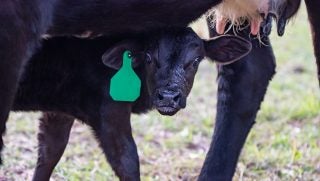Summer is just around the corner and with the season, comes the heat and the … flies. According to one Purina expert, now is the time to evaluate and start your fly control strategy for maximum effectiveness.
“Starting a program before flies appear goes a long way in prevention for calves, heifers, and cows,” says Gary Geisler, calf and heifer specialist with Purina Animal Nutrition. “A well-planned, holistic fly control program can keep calves healthier, maintain intakes and growth for heifers, and keep cows milking.”
A simple and effective way to control fly populations is to use a feed-through larvicide. This form of fly control:
- Does not require additional labor as compared to other fly control options with multiple steps (i.e. pour-ons, ear tags, walk-throughs, etc.).
- Is easily combined with an Integrated Pest Management Program (IPM) – a multi-faceted approach to pest management to make the most of your fly control program.
- Has an Insect Growth Regulator in the manure where flies lay their eggs. This stops the fly life cycle by preventing fly larvae from molting into pupae and, eventually, adult flies.
To be most effective, feed-through larvicides should be fed from 30 days before flies appear through to 30 days after the first killing frost.
“Implementing a feed-through larvicide before flies hatch will help keep fly populations in check. This type of control can help by reducing the first swarm of adult flies’ ability to reproduce,” says Geisler. “The earlier you break the life cycle, the fewer flies you’ll have buzzing around later.”
While a feed-through larvicide can help curb fly populations, it’s only one piece of the bigger IPM puzzle. In addition to using a feed-through larvicide, these management practices can help keep fly populations to a minimum:
- Identify the type of flies present and locate where maggots might be. Identifying these will help eliminate additional fly breeding locations and determine how to make these areas less of an attractant for flies.
- Determine if there are any other forms of fly control that could help reduce populations in the areas identified.
- Clean all pens on a regular basis to help eliminate fly breeding sites and store manure and soiled bedding away from calf and heifer housing.
- Keep feed fresh and dry as molasses can be an attractant for flies.
- Avoid accumulation of feed, manure, and water, which will attract flies.
- Use scatter baits for adult flies as needed.
“Taking a look at the whole fly control picture and getting an early start on your program can help calves stay healthy, heifers growing, and cows producing during fly season,” Geisler said.


